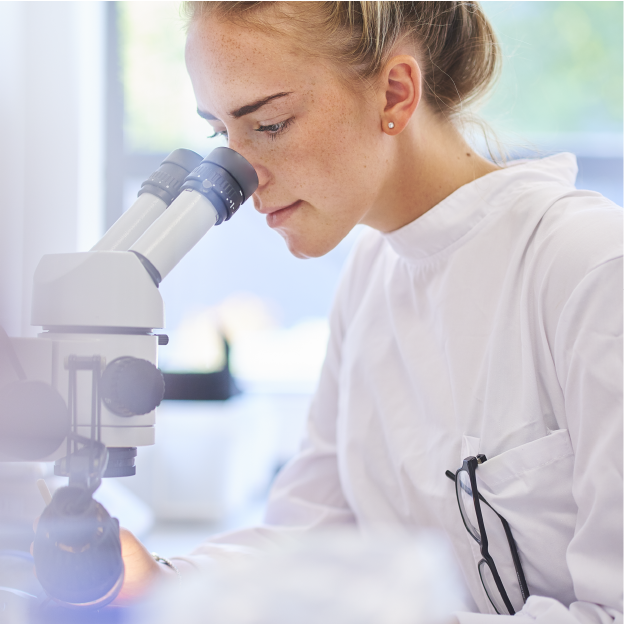In science, mice are an invaluable resource for researchers studying a myriad of questions; from unravelling the mystery of why we age, to discovering new treatments for diseases such as cancer, heart disease, AIDS and malaria. Their use has led to numerous scientific breakthroughs, some of which resulted a Nobel prize, including the discovery of penicillin in 1945. But what is it about mice, that makes them such a popular research tool?
Why use Mice in research?
Mice represent a valuable whole organism model reflecting the complexity of integrated biology that is hard to mimic with in vitro models. Mice share sufficiently high genetic homology with humans (across 80% of our genes) to allow researchers to use mouse models to study complex diseases that often have a genetic element to them. In addition, mice also have similar complex biological systems to humans and also develop similar diseases such as cancer and diabetes. Researchers can therefore use mice to develop and trial new treatments for many of these diseases.
Mice in research
Mice have been used widely in historic life sciences research projects:
Developing the use of penicillin as an antibiotic
Following the identification of penicillin by Alexander Fleming, Howard Florey and Ernst Chain used Fleming’s penicillin broth in mice to prove that penicillin worked as an antibiotic against serious bacterial infections. This later led to the mass purification and production of penicillin and won Alexander Fleming, Ernst Chain and Howard Florey the Nobel Prize in 1945.
Techniques of monoclonal antibody formation
Mice were also crucial to Georges
J.F. Kohler’s and Cesar Milstein’s success in developing a technique to produce
large quantities of a specific antibody. This technique became the keystone in
developing immortal cells that could go on to create a specific antibody
indefinitely. This led to Niels K. Jerne, Georges J.F. Kohler and Cesar
Milstein winning the Nobel
Prize in Physiology or Medicine in 1984.
Our portfolio contains a wide range of mouse models applicable to many research areas, including:
Arterial endothelial cells: Bmx Cre ERT2 Mouse
The Bmx Cre ERT2 mouse is special, because it has had its estrogen receptor (ERT2) under the Bone marrow x promoter edited, to exhibit tissue-specific expression for an inducible Cre-ERT2 fusion protein. This enables tamoxifen-induced Cre recombinase activity in arterial endothelial cells. The Bmx-Cre-ERT2 mouse model has therefore proven useful in studying the function of genes in angiogenesis, atherosclerosis and neovascularisation. This research is vital because arteriovenous malformation (AVM) can cause debilitating ischemia and life-threatening haemorrhagic strokes, and the underlying causes of the formation of AVM are poorly understood.
Lymphatic Vasculature: Prox1CreERT2 Mouse
This mouse model is unique as it was the first mouse model to provide researchers with efficient and specific targeting of the lymphatic vasculature. Prox1CreERT2 allows specific and temporally controlled cre-loxP recombination in Prox1-expressing tissues, including lymphatic endothelia. This recombination is observed during all development stages and in adults. This mouse is particularly important as the lymphatic vascular system plays an active role in immune cell trafficking, inflammation and cancer spread.
Vascular endothelial research: CDH5(PAC)CreERT2 Mouse
Researchers use this mouse model as it enables efficient inducible conditional recombinase expression in embryonic and adult endothelial cells. Similar to the Bmx-Cre-ERT2 mouse, this mouse model is used to study the gene function in angiogenesis, atherosclerosis and neovascularisation. This is important as in development, tissue regeneration or in certain diseases, angiogenic growth leads to the expansion of blood vessels and the lymphatic vasculature. This can lead to low blood pressure. In addition, the process of valve morphogenesis that causes an underlying human lymphedema condition, is poorly understood. This mouse model has also been used in research into the dysfunction of lymphatic valves.
Discover a mouse model to suit you
In terms of research, mice are a valuable ally and resource. Mice are helping researchers across a number of life sciences research areas, from research into complex physiological systems such as the immune, endocrine, nervous, cardiovascular and skeletal systems to research into a number of diseases, including cancer, atherosclerosis, hypertension, diabetes, osteoporosis and glaucoma.
Finding the perfect mouse model for your research can be difficult. We work with institutes worldwide to discover new and unique models and then make them available to life sciences organisations and researchers.
Explore our collection of mouse models or discover how you could safeguard and store your mouse models for future research



